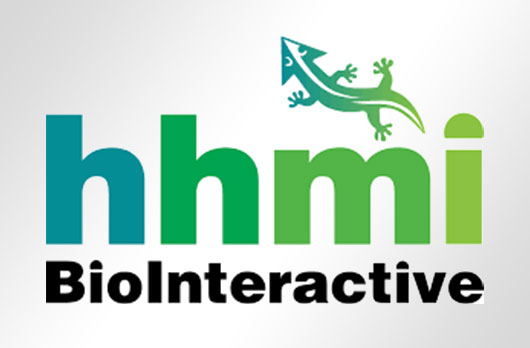BioInteractive Evaluation Studies
SEEC is working collaboratively with the Howard Hughes Medical Institute’s BioInteractive team to evaluate implementation and impact of classroom resources, planning tools, and professional development designed for science educators.
Lead Staff:
Karen Mutch-JonesProject Staff:
Anushree BopardikarSabrina De Los Santos
Santiago Gasca
Eric Hochberg
SummaryHHMI’s BioInteractive offers professional development experiences and planning tools to educators, with a goal of deepening their scientific and pedagogical expertise and effectively using BioInteractive resources to connect students to big ideas in biology and to engage in science practices. To date, SEEC’s evaluation has focused on designing a BioInteractive Impact Scale to measure and understand teachers’ trajectory of growth, and on studying the contributions of BioInteractive on HHMI’s Latin America initiative and School Partnerships program. Initial findings indicate that BioInteractive is influential on teacher practice and student experiences.
Research ActivityThe evaluation study is based on teacher survey and interview data as well as classroom observations and artifacts. Thus far, data has been collected from subset of educators participating in the Latin America initiative and School partnerships project. Additional data will be collected during the 2019-20 academic year. Early analytic work has enabled SEEC evaluators to develop a code book, which includes deductively developed codes, based on the BioInteractive Impact Scale, and inductive codes emerging from the initial data set. These will be refined through further phases of the study.
FindingsEarly analyses suggest that BioInteractive professional development, followed by teachers’ use of BioInteractive resources in their classrooms, are influencing instructional practice by enabling teachers to:
- shift away from conventional instructional approaches, where students are passive learners, to those that are more active, investigation-based, and involve sense-making;
- include more real world science experiences that engaged students and helped them to develop habits of mind;
- incorporate and adapt BioInteractive resources to enhance their teaching of scientific practices;
- support differentiated instruction, and thus, keep a wider range of students engaged in classroom learning activities.
HHMI’s BioInteractive offers professional development experiences and planning tools to educators, with a goal of deepening their scientific and pedagogical expertise and effectively using BioInteractive resources to connect students to big ideas in biology and to engage in science practices. To date, SEEC’s evaluation has focused on designing a BioInteractive Impact Scale to measure and understand teachers’ trajectory of growth, and on studying the contributions of BioInteractive on HHMI’s Latin America initiative and School Partnerships program. Initial findings indicate that BioInteractive is influential on teacher practice and student experiences.
The evaluation study is based on teacher survey and interview data as well as classroom observations and artifacts. Thus far, data has been collected from subset of educators participating in the Latin America initiative and School partnerships project. Additional data will be collected during the 2019-20 academic year. Early analytic work has enabled SEEC evaluators to develop a code book, which includes deductively developed codes, based on the BioInteractive Impact Scale, and inductive codes emerging from the initial data set. These will be refined through further phases of the study.
FindingsEarly analyses suggest that BioInteractive professional development, followed by teachers’ use of BioInteractive resources in their classrooms, are influencing instructional practice by enabling teachers to:
- shift away from conventional instructional approaches, where students are passive learners, to those that are more active, investigation-based, and involve sense-making;
- include more real world science experiences that engaged students and helped them to develop habits of mind;
- incorporate and adapt BioInteractive resources to enhance their teaching of scientific practices;
- support differentiated instruction, and thus, keep a wider range of students engaged in classroom learning activities.
Early analyses suggest that BioInteractive professional development, followed by teachers’ use of BioInteractive resources in their classrooms, are influencing instructional practice by enabling teachers to:
- shift away from conventional instructional approaches, where students are passive learners, to those that are more active, investigation-based, and involve sense-making;
- include more real world science experiences that engaged students and helped them to develop habits of mind;
- incorporate and adapt BioInteractive resources to enhance their teaching of scientific practices;
- support differentiated instruction, and thus, keep a wider range of students engaged in classroom learning activities.

Funder:
Howard Hughes Medical Institute
